7 Ways Companies Transformed Their Annual Performance Reviews
Two hundred and ten hours.
That’s the average amount of time managers spend on annual performance reviews every year.
For most companies, that’s more than five weeks of productivity lost to the dreaded annual performance review.
With that in mind, it’s no surprise that 9 in 10 managers don’t approve of their companies’ annual performance review processes.
Annual performance reviews are more than just time-consuming. Oftentimes, they are also ineffective.
The management research firm Corporate Executive Board (CEB) found that despite the time spent conducting performance reviews, they are often inaccurate.
“Individual performance ratings have absolutely zero correlation with actual business results.” —Rose Mueller-Hanson, HR leader at CEB
CEB’s research showed that 77% of HR executives don’t believe performance reviews accurately reflect employee contributions.
In today’s times of uncertainty, the annual performance review process is even more challenging.
Annual Performance Reviews During Times of Uncertainty
Today, we are in unprecedented times. We’re not only amidst a global pandemic in the wake of COVID-19, we are also in an economic crisis and racial tensions are at an all-time high.
For many of our employees, today’s world seems surreal. They also have another source of stress: the annual performance review.
Fortunately, there are things we can do as leaders to relieve that stress and help our employees feel more supported and secure in their positions.
The only catch is that it requires change. It requires taking a different perspective and being willing to step out of our comfort zones.
The problem isn’t with the performance review itself. It’s with how they are conducted.
Here are seven ways you can learn from companies who have transformed their annual performance reviews for the better:
1. Set the Stage for a Successful Performance Evaluation
Think back to when you first started at your organization.
Did you have a clear idea of how your manager would rate your performance? Did you understand how your performance impacted your organizations’ goals?
If you’re like most employees, the answer is probably “no.” While most companies set individual and organizational performance goals, they often fail to make the connection between the two and remain transparent.
To prevent this, many organizations are putting more effort into setting the stage for success. At Microsoft, for example, employees set their own performance goals.
The only requirement for the goals employees set is that they:
- Are SMART goals
- Align with manager and organizational commitments
- Are supported with customer-centric actions and measures
To get off on the right foot, discuss your performance review process and metrics with each of your new employees during onboarding. Be transparent about the process and consider letting them set their own goals.
Show your employees how they can contribute to your company’s larger objectives by meeting their individual goals.
During these turbulent times, your organization’s goals are probably shifting. Let your employees know this and how they can support these new objectives. This will help them better understand the big picture and stay engaged in their work.
2. Don’t Wait Until the Annual Performance Review to Give Feedback
In wake of COVID-19, more employees are working remotely than ever before. This has forced several companies to rethink the annual performance review.
With so many employees currently teleworking, providing frequent feedback is more important than ever.
When it comes to performance management, there are many types of feedback you can use. Here are three types that companies are using to transform their performance review process:
- Real-time performance feedback
- One-on-one meetings
- Midpoint performance check-ins
Real-time Performance Feedback
Real-time performance feedback happens frequently and quickly. This could be as simple as sending your employee an email or catching up when an infrequent mistake or problem occurs. It can also be reaching out to acknowledge an employee who did a great job.
“A conversation is a lot less work than an essay.”
—Stephen Balzac, president of the organizational development firm 7 Steps Ahead
When you provide feedback more frequently, your employees are more likely to understand the context behind it. This makes it easier for them to apply the feedback and improve their performance.
One-on-One Meetings
One-on-one meetings are about more than just performance management. It’s an opportunity to engage your employees, collaborate, and work on short and long-term goals.
A recent Gallup survey found that when companies use one-on-one meetings, their engagement levels rise and employee productivity increases.
Organizations that have adopted one-on-one meetings are seeing real results. Take Adobe, for example. After implementing organization-wide one-on-one meetings, they saw 30% drop in voluntary employee turnover.
To get started with one-on-one meetings, check out TINYPulse’s article Five Ingredients for a Perfect One-on-One Meeting.
Midpoint Performance Check-Ins
A huge problem with annual performance reviews is that, oftentimes, feedback isn’t timely or relevant.
To address this, organizations like Google have added a midpoint performance check-in.
By checking in half-way through the performance review cycle, employees are able to reflect on their performance and make adjustments.
3. Provide Your Managers with a Performance Appraisal Toolkit
Performance reviews and appraisals aren’t just challenging for employees. They are difficult for managers, too. To make sure your organization’s performance review process is successful, it’s important that your managers have the resources they need.
Rather than leaving individual managers to their own devices, many innovative organizations are providing managers with a performance review toolkit. This ensures performance reviews are effective and consistent throughout the organization.
To put together your own manager performance review toolbox, you don’t have to reinvent the wheel. Here are some useful resources and tips to get you started.
Set Performance Review Due Dates and Milestones
There’s a lot of work that goes into an annual performance review. You can prevent the last-minute rush by providing your managers with a performance review calendar or schedule.
To get started, break down each individual task managers need to complete to prepare for the review. This could include collecting data, scheduling the meeting, and more.
Identify reasonable dates each task should be completed by. Use these dates to create a calendar each of your managers can use to prepare for their performance reviews.
Provide Example Performance Review Statements
While performance review feedback should be specific, it should also be constructive. By giving your managers a list of example performance review statements, like TINYpulse’s 100 Useful Performance Review Phrases, you give them a starting point.
They can then find the most relevant statements and customize them to fit their specific needs. This will help your managers save time and communicate more effectively.
Use Effective Performance Review Templates
If your company does performance reviews, chances are you have your own forms and templates. If you’ve been using the same annual performance review forms for a while, it may be time to take a look at revamping your templates.
For inspiration, download TINYpulse’s free 3 Highly Effective Templates for Performance Reviews.
Give Your Managers the Employee Performance Data They Need
Performance data is often the number one driver of the annual performance review. Often this data is used to help assess goal progress and identify areas for improvement. It’s also important to provide context to the data.
By using a software like TINYPulse Coach, your managers can monitor goal progress year round and get real-time performance data with the click of a button. This will help your managers save time and increase productivity.
4. Solicit 360-Degree Performance Feedback from a Variety of Sources
Nearly 1 in 5 employees lack confidence in their managers ability to adequately assess their job performance. To help provide a more balanced performance review, many companies now include 360-degree feedback in their review process.
Feedback from a variety of sources, like managers, co-workers, and direct reports, helps employees see their performance from a different perspective. This in turn increases their self-awareness and on-the-job performance.
You can help your employees gain valuable performance insights with an intuitive software like TINYpulse Coach. TINYpulse makes it easy to request 360-degree feedback from managers, peers, and even external customers.
READ MORE: 100 Useful Performance Review Phrases
5. Redefine Your Employee Performance Rating Scale
A critical factor of performance reviews that companies often overlook is the rating scale used. Rating scales are meant to provide a systematic approach to performance reviews, but traditional rating scales often fall short.
According to David Rock, author of Your Brain at Work, ranking systems like this demotivate employees and may encourage a fixed-mindset. This is because rankings cause anxiety and we take on a flight or fight response.
As more companies realize this, many have moved away from the traditional five point likert scale.
The popular steakhouse Texas Roadhouse, for example, completely did away with their rating scale and annual performance review. Instead, they use a new system called GPS, which stands for growth, plan and support.
“I think a lot of times companies and HR folks focus on the bottom 10% and lose focus on the other 90%.”
—Mark Simpson, Texas Roadhouse
In wake of COVID-19, many more organizations are rethinking their rating scales. A performance review should use metrics to tell the story and provide constructive, meaningful feedback.
Due to ever-changing circumstances and unique challenges employees are currently facing, it is more difficult than ever to do this. It’s important to be flexible with ratings or consider not doing ratings at all to provide a fairer and more accurate review.
6. Develop Your Employees’ Strengths
Leveraging your employees’ strengths is much easier than trying to fix weaknesses. It also increases engagement and profits.
After decades of research, Gallup found that people who use their strengths every day at work are six times more likely to be engaged. This can lead to up to a 29% increase in profits.
To become a strength-based organization, encourage your employees to complete a self-evaluation. This will help them better understand their unique strengths.
Make the connection between how your employee’s individual strengths contributed to the employee meeting goals. You can also discuss future projects they can use their strengths to contribute to.
7. Conduct Annual Performance Appraisals Remotely
During the best times, performance reviews can be challenging for managers and employees alike. In wake of COVID-19 and other dynamics, it is even more difficult.
While some companies have postponed performance reviews, it’s important to remain consistent and assure employees of business continuity.
“People need assurances...Performance reviews are a great time to take a deep breath, see where you’ve been, and assess where you’re going.”
—Debora Roland, vice president of HR at CareerArc.
How to Conduct a Successful Remote Annual Performance Review
Find the Right Video Conferencing Software for Performance Reviews
To successfully conduct a remote performance review, it’s important that the video conferencing software you use meets your organization's unique needs.
From Zoom to Google Hangouts, there are several options available. Here is a breakdown of four of the top virtual meeting software to consider using for your performance reviews.
1. Zoom for Virtual Performance Reviews
From January 30, 2020 to April 30, 2020, Zoom’s sales rose by 169%, and for good reason. Zoom is an easy to use video conferencing software. The free basic version which allows you to host unlimited one-one-meetings is perfect for holding performance reviews with your employees.
2. BlueJeans for Virtual Performance Reviews
Similar to Zoom, BlueJeans offers high-quality video conferencing streaming. This makes it easy to connect with each of your employees for their performance review. While Bluejeans isn’t free, it costs as little as $9.99/month to host meetings.
3. Cisco Webex for Virtual Performance Reviews
If you want a video conferencing software you can use for more than just your annual performance reviews, Webex is one to consider. With numerous features and metrics provided for less than $15/month per host, Webex may be worth the investment.
4. Google Hangouts for Virtual Performance Reviews
Traditionally, Google Hangouts isn’t commonly used in the workplace. But it is becoming more popular. If your organization uses Google Drives to collaborate, this may be a good fit. While the overall feel isn’t exactly professional, it can work great for individual performance review meetings.
Provide a Visual Resource During Your Remote Annual Performance Review
Remote performance reviews are challenging. Even with the best video conferencing software, it can still be hard to ensure you’re both on the same page.
A visual resource, such as a PowerPoint slide deck, can help guide the conversation. This type of template will also help your managers become more comfortable with remote performance reviews.
You can use your current performance review form as a starting point. Be sure to give your managers a slide or two that they can customize to highlight accomplishments and important events.
Be Transparent and Empathetic
Right now, we are in unprecedented times. During this global pandemic and economic crisis, it’s more important than ever to be open with your employees and show compassion.
“How the company treats its employees in this situation will make or break the culture,”
—Anna Tavis, clinical associate professor of human capital management at New York University
In a Harvard Business Review article, HR experts shared several strategies you can use to help you tailor your performance reviews to your employees’ unique situations. Start by reflecting on your purpose.
What is the goal for your performance reviews during these times of uncertainty? Are you looking to reassure employees? Find out how you can best support them?
By sharing your intentions upfront, you can put your employees at ease and ensure your remote performance review is successful.
How is your organization handling annual performance appraisals?
It’s easy to get stuck with the status quo. However, during these turbulent times, it’s not business as usual for most organizations. The performance review process is no exception.
As many successful companies like Adobe and Google have shown us, we need to be willing to adapt for our employees’ sake and organizational well-being.
Performance management isn’t just an annual performance review. It’s a system. And making the right changes can transform your workplace and ensure stability.
Are you ready for a change that will make a real difference?
Request your demo of TINYpulse Coach today to see how you can transform your organization’s performance management.
Share this
You May Also Like
These Related Stories
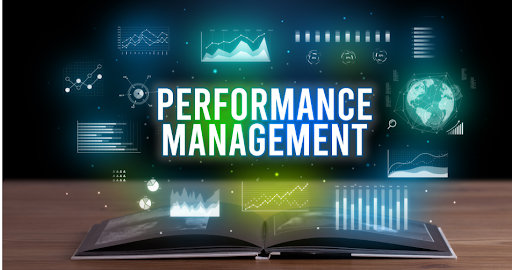
How Google evolved performance management to drive top performance across its growing workforce
The CHRO's Guide to Performance Management


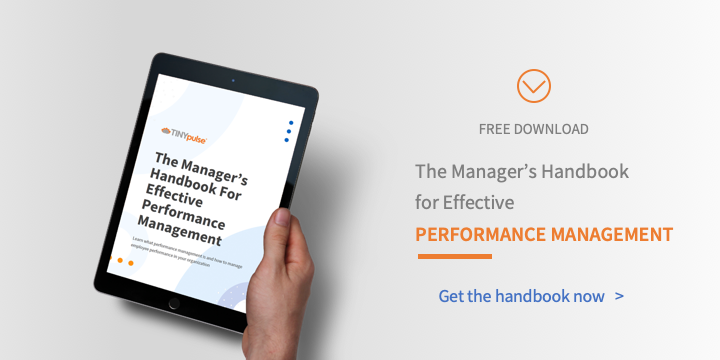

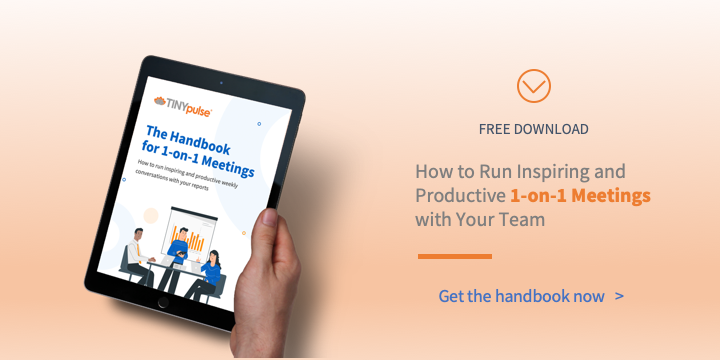
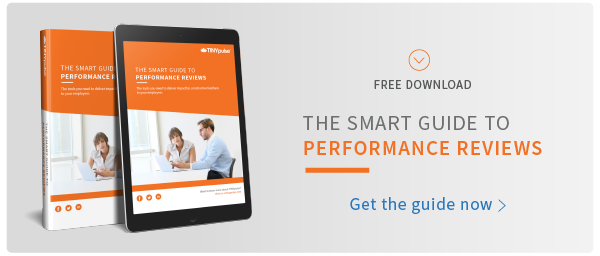


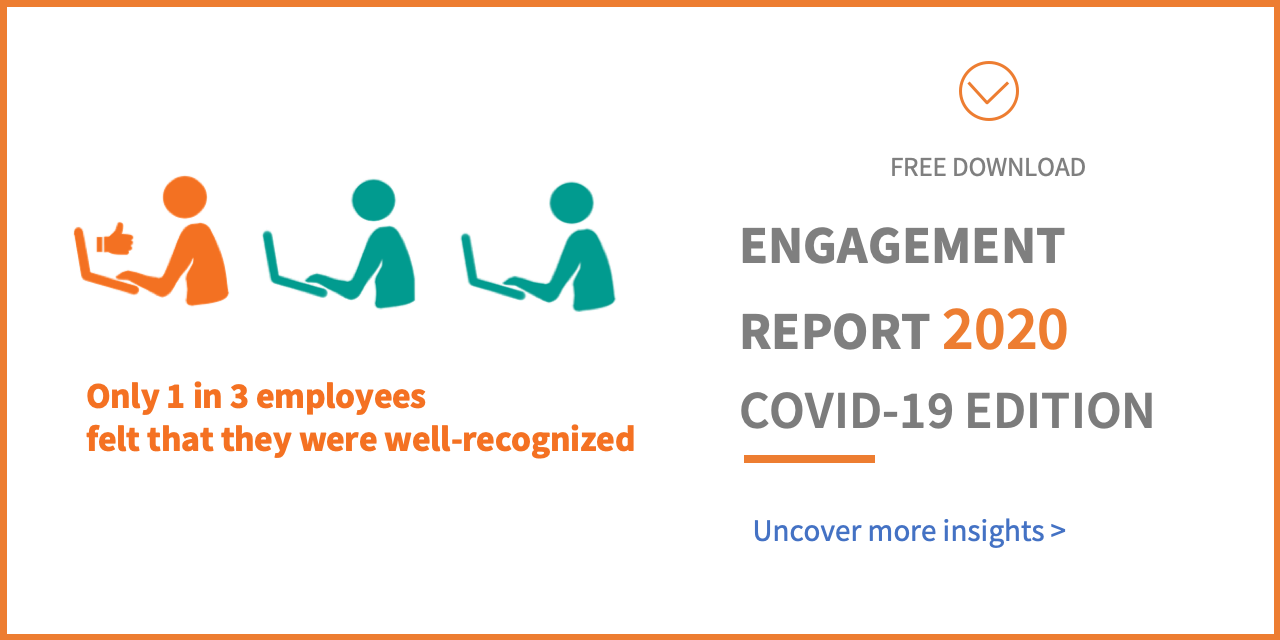
.png?width=534&height=632&name=blog%20ad%20(1).png)
